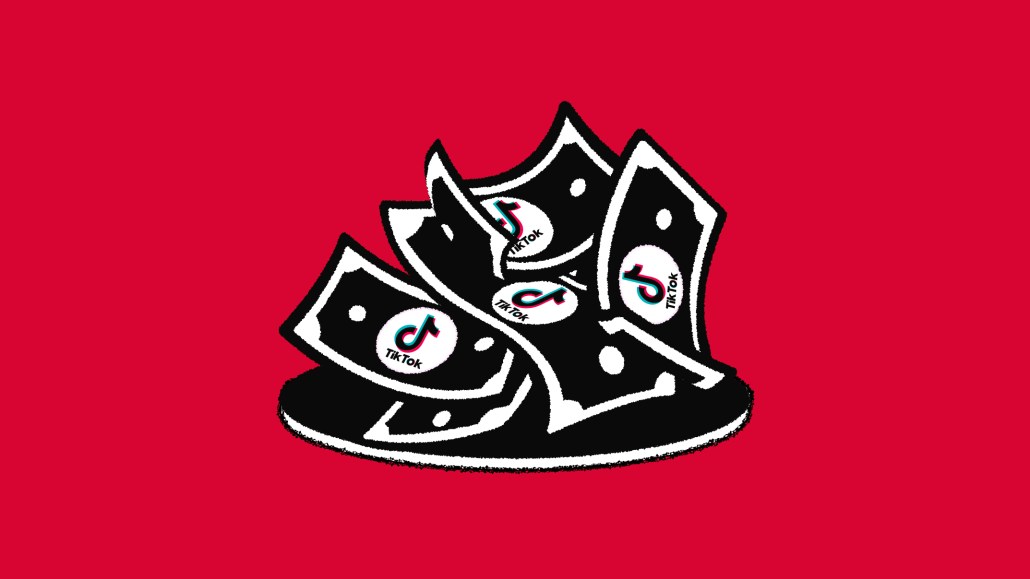Save 50% on a 3-month Digiday+ membership. Ends Dec 5.
‘Brands are already changing their strategies’: Experts weigh in on TikTok influencer marketing spend

In recent weeks, there has been a lot of talk about the TikTok-ification of Instagram, with the platform’s algorithm prioritizing short-form video content over photos despite the protests of users and influencers alike. Even so, Instagram execs have said the app will continue to prioritize video and provide more creative tools for Reels as it looks to compete with TikTok.
This means that creators who once focused on photo content for Instagram have had to shift their strategies, and will likely have to continue to do so. With ad budgets shifting to TikTok and predictions that influencer spending will move that way too (by 2024, Insider Intelligence analysts expect that TikTok will surpass Instagram in terms of influencer marketing spending), the influencer marketing landscape will continue to change.
Insider’s prediction for 2024 makes sense: The number of users on TikTok has grown exponentially in the last few years, with the Gen-Z demographic in particular seeing a lift since 2020. As of last year, the social network had over a billion active monthly users. Instagram still has more influencer ad dollars as the platform tries to mimic TikTok with Reels, but there’s already been an impact on influencer marketing as brands turn to creators on TikTok where the landscape isn’t as mature or competitive.
“Brands are already changing their strategies and shifting budgets to TikTok,” Nicole Fuhrman, strategy director at full-service creative agency Swift, said, adding that some brands have started to shift budget from Instagram to TikTok to reach Gen-Z audiences. “Micro influencers are playing a growing role in brand marketing, and brands are taking notice.”
Influencer marketing on Instagram has evolved considerably since its inception, and that maturation may end up working against the app’s creators. “The rapid, recent growth of TikTok means there is still so much untapped potential for brand-creator partnerships on the platform, as opposed to other major platforms where the creator landscape is more established and therefore competitive,” said Ross McCormack, vp of influencer marketing at Havas Media Group, North America.
At the same time, the polish of Instagram has been swapped for the realism of TikTok, which may be a difficult pivot for some creators. “As we see Gen-Z start to reimagine social from highly curated content to an unfiltered and unapologetic tone, brands have a massive opportunity to meet them where they are,” said Fuhrman.
Instagram has undergone a number of significant changes in the past year, especially regarding its newfound shift from photo sharing to video content. The result has been backlash from users and influencers alike, who want Instagram to stay the way it has been.
“There’s a reason Instagram is the leading platform for influencers: users like it,” said Meg Seiler, evp and director of PR and social influencer engagement at Team One. “Ultimately, the better path may be increased connectivity between platforms vs. ubiquitous imitation.”
Even so, despite the appeal of TikTok as a newer platform, short-form, influencer content will be more in demand, and agencies who can scale their influencer content will have an advantage. It is also necessary for agencies to be flexible as trends shift, for example if consumers start to skip or ignore these styles of advertising.
“For brands, it means ultimately assuming a heavier creative production burden for creative and more balkanized content based on platform demands,” said Bo Jacks, director of user acquisition for digital marketing agency Brainlabs.
Influencer posts on TikTok, however, see a higher engagement from a variety of followers than brand posts, according to Upfluence. “All these learnings indicate that it’s to a brand’s advantage to entrust the TikTok influencer with the creative direction for the content if they want the highest-possible ROI,” added Peter Kennedy, founder of Tagger, a software-as-a-service platform for agencies and brands that use influencer marketing.
TikTok’s continued growth will force advertisers to change their influencer marketing strategies, and there is also the expectation that there will be more apps that emerge to compete with both Instagram and TikTok in the future. The rise of TikTok has already changed how brands approach creator-brand relationships. Agency execs say the most successful collaborations aim to balance the brand’s core message with the creator’s authenticity.
Despite this, TikTok’s originality means brands are handing over more creative control than ever before to ensure these partnerships are successful. “Achieving the right balance between the brand’s core message and the authenticity of the creator has long been the goal for the most successful collaborations,” said McCormack.
Seiler said she believes that Instagram will remain the top platform for influencer marketing “TikTok will continue to grow. However, Instagram will remain the leading influencer platform for the near future…as long as they navigate through current backlash from content creators and users regarding platform algorithm changes,” she said.
More in Marketing

Ulta, Best Buy and Adidas dominate AI holiday shopping mentions
The brands that are seeing the biggest boost from this shift in consumer behavior are some of the biggest retailers.

U.K. retailer Boots leads brand efforts to invest in ad creative’s data layer
For media dollars to make an impact, brands need ad creative that actually hits. More CMOs are investing in pre- and post-flight measurement.

‘AI is permeating everything we do’: How Guitar Center developed 2 AI tools this year
This summer, the company launched a chatbot called Rig Advisor to help customers find the right instruments and products.
Ad position: web_bfu





